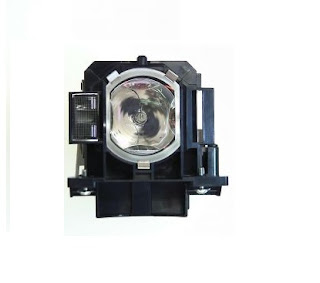What Should You Check For A New Projector Lamp?
Projector lamps continue to dominate the market despite the industry's ongoing migration to LED and laser light sources. While LED and laser lights have a much longer lifespan, replacing a lamp module is a relatively straightforward procedure that many AV professionals and customers are familiar with.
While LED and laser lights have a significantly longer lifespan, replacing a lamp module is a very simple process that many AV professionals as well as consumers have been accustomed to.
However, no one wants to be stuck in the middle of a presentation as well as a home movie with a blown lamp. Here are indicators that you may consider while purchasing a new projector lamp.
Check the Indicator Light
Most Projector lamps contain an indicator light or a message that indicates when the lamp's life is running out. It's not a certainty that you'll need a new lamp straight away if this light turns on, but it's a good idea to get a backup ready when the time comes.
After you've replaced the lamp, you'll need to reset the lamp timer with the projector. If you don't reset it, you might not get a warning when the new lamp is nearing the end of its life.
Many projectors and DLP televisions now incorporate a lamp replacement indicator that illuminates when the lamp needs to be replaced. A flashing yellow light or red warning on the screen, or maybe a bulb icon on the display, could indicate this. If you're not sure where to look for the indication, look in the Projector bulbs
literature.
Keep an eye out for Flickering Images
The fault is with the mechanics if the images flicker after a severe fall. If your projector is subjected to severe temperatures, the lights may have been damaged. If nothing has changed and visuals begin to flicker, you have cause to think that the lamps are failing.
There is one more thing. It's possible that the flickering will go unnoticed. That's why you should keep an eye out for it now and then.
Look for color shifting
New projector lamps (particularly OEM bulbs) produce bright, vivid colors. If the colors in your projector appear muddy when you turn it on, it's because the bulb is no longer powerful enough to display proper colors through the color wheel and liquid crystal panel.
Things to Think About When Buying a New Lamp
While each model is different, there are a few points to bear in mind to help you understand what else to check for when replacing lamps and what happens when a Projector bulbs reaches the end of its lifespan.
One thing you'll notice about projector bulbs is that they all have an expected life or rating. This can range anywhere from 2000 to 4500 hours or more, depending on the bulb.
The expected life of a lamp is normally the same as any other warranty coverage it has. Keep in mind that this is merely an approximation of how long the bulb will last under normal circumstances, and the guarantee will almost definitely be void.
A projector should only be used for a few hours per day in a clean, dust-free setting to have the best chance of lasting as long as its estimated lifespan. It will not last as long if you use your projectors more frequently or if it is set up in a dusty area.
Doing your research before changing the bulb is a good way to stay on top of lamp replacements. Buying an extra bulb at the same time as the projector is also a good idea. You'll be able to speak with the salesperson to ensure you're obtaining the correct bulb, and you'll be prepared to replace it when the time arrives.
Projector Lamp Compatibility
The compatibility of the module as well as the projector is a common question we get concerning replacement bulbs. The wattage (lumen output) of the lamps used in various projectors varies significantly depending on the type of projector application: classroom, mobile, conference room, huge arena, and so on. The bulb's ignition and running voltage, reflector shape and size (elliptical and parabolic), lumen ratings, as well as focal distances are also additional variables. Despite the fact that many lamp modules appear to be the same, the lamp inside may have various optical qualities to fulfil the needs of different projectors.
This isn't to mean that each module or bulb is limited to a single Projector bulbs. One of the peculiarities (i.e., ambiguities) of today's projector industry is that multiple manufacturers might license the same projector model, differing only in resolution rates or lenses, but using the same exact module. As a result, several of our projector bulbs are found in a variety of different models from various manufacturers.
Wrapping Up
Projectors are wonderful tools for displaying large video images in your home, office, or classroom. However, they are not maintenance-free. However, as long as you're aware that replacement bulbs are really not cheap and that you'll need them occasionally, you can usually budget for them over the life of your projectors without incurring substantial financial costs.
Maintaining a projector is essential for its long life and for being a responsible steward of church property. Every two years, it is advised that the projector be repaired and maintained. It's best to clean the projector for dirt accumulation on a seasonal basis. Ensure that you get high-quality projector lamps that contain the original manufacturer's Projector Lamp.

Comments
Post a Comment